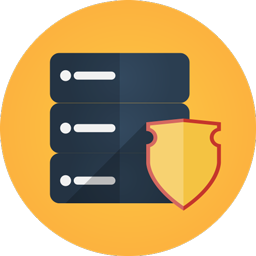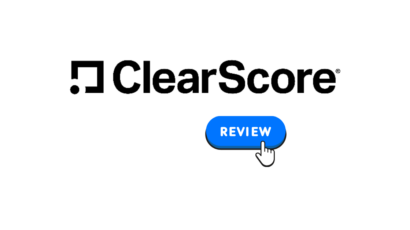Disclosure: Privacy Australia is community-supported. We may earn a commission when you buy a VPN through one of our links. Learn more.
Transparent Proxy

If you’ve been on the internet for a while (which you probably have), you’ve probably run into the term ‘proxy’.
It’s a pretty useful tool for any internet user that can allow them to get around geoblocked content such as certain Netflix libraries or even websites.
Of course, these consumer-grade proxies do have their limitations, often in the form of data cap or bandwidth limits.
On the other hand, there are proxies that organizations and companies use called ‘transparent proxies’ and they play an integral part of keeping everybody safe and secure. Unfortunately, people can and do sometimes run afoul of transparent proxies, so let’s look at what they are, what they’re used for, and how to know if you’re behind a transparent proxy or not.
What Is A Transparent Proxy?
Essentially, a transparent proxy is a server or device that relays messages between yourself and the internet at large, which is why it can also be called an inline proxy or a transparent proxy.
So say, for example, that you’re at a public library or university, and you want to browse privateaustralia.com. What will most likely happen is that your request will be sent to a transparent proxy, which will then request the page you want from our website.
Our website then sends that page to the proxy, which then sends it back to you. So it’s basically the exact same experience, except there’s a middle-man device which routes traffic.
The main thing to know here is that a transparent proxy doesn’t alter the content or change anything on any page or download you request or send out. This is in contrast to a non-transparent proxy, which absolutely exists, and can or do alter the information requested (more on that later).
What is a Forced Proxy?

You might hear the term ‘forced proxy’ bandied about, but it’s just another name for a transparent proxy, mostly due to the fact that it’s ‘forced’ on the user.
That may sound a bit more insidious than it really, since there’s generally a lot of stuff that is going on in the background of your day to day on the web that you might not be aware of.
Similarly, if you work in an office space or anywhere that there may be confidential information, a forced proxy is pretty standard when it comes to protecting the company’s intraweb security. That being said, some companies, organizations, etc. do inform people if they have forced proxies, but that’s not the norm.
Uses of Transparent Proxy
As you’ve probably summarized, transparent proxies can be very powerful when it comes to controlling data and providing security. With the ability to observe pretty much anything that comes and goes (which isn’t encrypted), the proxy essentially has the keys to the kingdom.
Caching

This one is pretty interesting and blew my mind when I first heard of it. Ever wonder why ads on Youtube sometimes load wayfaster than the videos themselves? Well, that’s because of caching.
So instead of Youtube serving the ads directly from their HQ server, they’ll load the content in a regional or country specific server, because they know that these ads are going to be seen constantly.
That way they take a strain off their servers as well as the bandwidth used by yourself and other users. The actual videos themselves take longer because those are served from central servers since Youtube doesn’t know that you might request that one specific video.
This form of caching is actually pretty common, and not just for Content Delivery Networks (CDN) like Youtube and Netflix. If your ISP notices that a lot of users keep requesting the same page over and over again (such as Google.com or CNN.com) they’ll make a mirror copy of the pages request on their own proxy servers.
That saves them the trouble of having to constantly request pages from the sites themselves, further decreasing load times and stresses on the bandwidth.
So really, caching is pretty integral to the efficient functioning of the internet!
Related Read: Best VPNs for Netflix
Filtering

If you’ve ever been at your office and tried to load Facebook or Youtube to no avail, you’ve probably run afoul of proxy filtering.
As the name suggests, the whole idea behind this is to stop any access to web pages that the organization or company feels may be disruptive.
Social media platforms are usually the first to be filtered, but other things such as news sites or even competitor’s web-pages might be filtered as well.
It’s not all bad though, filtering can also be used to help stop people from accessing well-known phishing sites or sites that are generally malicious. You’ll probably also tend to see a lot of that in places that have public wifi, such as restaurants, libraries, and such.
DDoS protection

Speaking of malicious stuff, one of the biggest positives of a transparent proxy is against DDoS protection.
DDoS stands for ‘Distributed Denial of Service’ attack, and it’s essentially an attempt by somebody to stop or alter the normal traffic of a website or server.
They do this by flooding said server with thousands upon thousands of requests in a short time period, thereby taking up all the connection slots and stopping people from being able to access the site or server.
It’s a pretty complex thing that uses botnets and can work on different layers, so if you’re interested to read more, you should check out what Cloudflare has to say about DDoS Attacks.
So, what companies like Cloudflare do, is that they provide several transparent proxies, and a detection algorithm that attempts to filter through legitimate requests and spam requests. If one transparent proxy server fills up with requests, new ones are just redirected to a new transparent proxy, and so on and so forth.
It’s a pretty ingenious way to get around DDoS attacks, which are actually much more common than you realize.
Gateway
Another thing that transparent proxies can do is redirect you to a gateway that might require a log-in, or for you to agree to rules. If you’ve ever spent the night at a hotel and used their internet, you’ve probably been directed to a hotel-owned page that requires you to enter some form of credentials before allowing you access to the internet.
Well, that’s a gateway, and it’s the hotel’s way of making sure that nobody outside of guests or approved people are using their internet.
The same thing can apply to restaurants, cafes, bars, and any place that has public wifi and requires you to agree to some rules.
How To Detect If You’re Behind a Transparent Proxy

This can be pretty much hit and miss depending on how the server is configured.
The easiest way to know if you’re behind a proxy is to try and connect to a server or website that you know doesn’t exist.
When that happens, your browser tends to show a pretty standard information message.
For example, Chrome says ‘this site doesn’t exist’. If you run into a message that isn’t standard for your browser, or you get redirected to another page, that can mean that you’re behind a transparent proxy.
Another way is to click on the lock icon where the URL is and see to who the SSL certificate has been supplied to. If it’s to your ISP or your company, then you’re probably behind a transparent proxy as well.
Of course, if neither of those work you could always try a detect proxy tool, but those can be very much hit and miss.
Ultimately though, if you are behind a proxy, there really isn’t much you can do about it.
Related Read: Can Your ISP See Your Downloads
In Conclusion
As you can see, transparent proxies have a ton of really great uses, beyond just consumer-grade stuff, or having content blocked for you as a general user. You probably run into dozens, if not hundreds of transparent proxies on a day to day basis, and they generally don’t impact your life except to make it better.
That being said, if you’re worried about the owner of a proxy server seeing what you’re doing, you might consider getting yourself at least a cheap VPN or even a completely free VPN.




